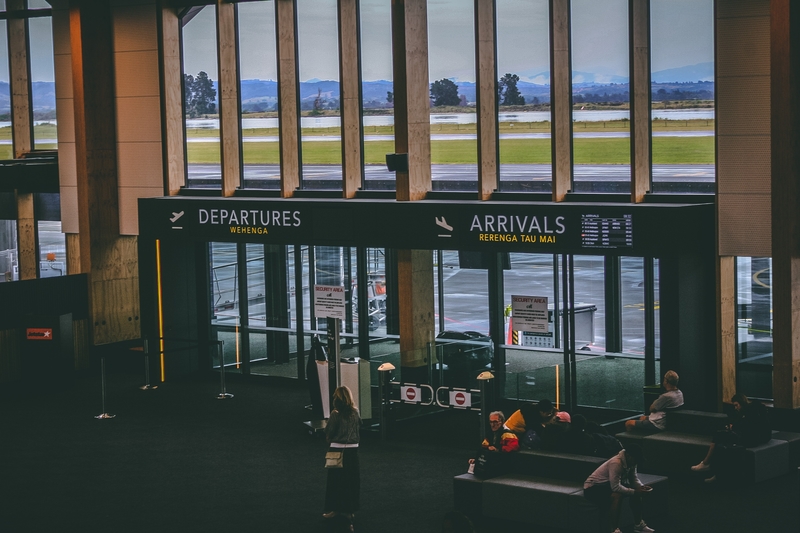
Airports are being shaped by new digital initiatives that will radically change passenger experience and airport designs themselves; Hong Kong International Airport (HKIA) is reportedly leading the way in many of these new technologies.
The main focus for the new technology HKIA is implementing is to improve customer experience, from check-in to boarding. Its goal is for passengers to have a quick and simple journey through the airport.
Single token journey
Currently, passengers still need to check in baggage and continuously show their boarding pass and passport. With new technology, it could be possible to integrate a whole journey from the passenger’s home right to the boarding gate.
In the future, check-in at home will be possible using facial recognition. This data can be connected directly to the airport and the passenger can go all the way through an airport to the boarding gate.
The airport has implemented 100 self-drop bag areas, as well as completing the installation of 44 e-gates for passport and boarding pass checks.
HKIA is currently collecting biometric data from self-check ins using cameras and linked passport readers. In the future, HKIA aims to use facial recognition to allow passengers to check in even before they reach the airport using apps on their phones. Ultimately facial recognition is a great tool for the passenger as it ensures a quick yet secure journey through an airport.
The future of baggage
Security implications are always a concern. Currently, passengers can check in at home and acquire boarding passes but cannot get baggage tags. In the future, it is hoped that passengers will be able to travel separately from their baggage. The idea for baggage yet again with home check-in – passengers can phone a hotline and someone will go to their home to collect the bag for a charge through a logistics provider. The airport can then track the package and inform passengers of the baggage’s status.
The challenges associated with this are both the impacts on terminal design and the security implications. There several challenges around the introduction of this. Airports still operate traditional baggage collection systems. If the bags are moved off terminal and passengers are just passing through using their face scans, there appears to be no need for a need in the future large terminals.
An increasing amount of the travelling processes will be removed from airports – passengers go to airports to board the plane. The whole concept of an airport will soon change and it will be a destination rather than a place where you need to transition from one mode of travel to another.
The effective use of data
Data is of great importance to the future of airports where it is vital to gather, share and collect data for a number of reasons. Data can be used for risk-based screening and advanced passenger information. However, for this to occur collaboration is imperative.
In theory, airports should be able to differentiate the risk level for all passengers and ensure there is no inconvenience to passengers when ascertaining this information. However, this requires heavy collaboration with enforcement agencies.
As an operator, airports can collect information and relay this information to other sources – this, however, has severe privacy implications. If airports are cautious and sensitive, the data can be passed through. The perfect solution would be that airports know exactly who is going to get on or come off a flight.
Currently, only immigration agencies and airlines have access to passenger data but it is important that airports can match all of the data together for a streamlined process through airports. HKIA aims to do this with its new data centre (due to be completed in 2020) that will be able to effectively store and use data efficiently.
Transitioning to 5G
5G is imperative to the future of airports, necessary for machine-to-machine communication and the development of autonomous vehicles. Moreover, 5G can be used to stop a vehicle in an emergency.
HKIA is currently focusing on machine-to-machine communication or ‘autonomous chatter’, particularly in the use of autonomous vehicles. Autonomous vehicles are an effective way to transfer baggage. The technology is already there, it’s now the application of this technology that needs to be focused on, for example trialling durability and weather impacts on these vehicles.
Autonomous vehicles are not new. Currently, the only challenge in terms of the full-scale application of autonomous vehicles is the interface and safety aspects. In the controlled environment of, say baggage halls, this isn’t such a problem. The technology needs to be fully tested before application to ensure it is safe, which can be aided through GPS and CCTV.
Terminal robotic tech interfacing with passengers
Robotics within terminals are an exciting new technology that can aid with passenger satisfaction. They would be able to give directions, deliver purchases made in stores and guide passengers around the airports. Delving further, they can even complete temperature checks within the airport and check for cleanliness.
However, functionality is critical. While some airports may focus on the aesthetic quality of their robots, HKIA is investing its time and money into functionality to ensure good passenger experience. It has bought 10 robots for the purpose and is planning to invest in more in the future.
Remaining flexible
Smart investment in new tech is paramount the day-to-day running of an airport is to truly be transformed. Thus, to ensure the effective implementation of new digital initiatives, airports need to be flexible.
It takes three years to build a new terminal and the technology that was relevant at the beginning of those three years will not be once the terminal is complete. Therefore, even at the design stage, there needs to be room to fix specifications.
Airports have to make sure they can adapt and be continuously updated to take full advantage of exciting new technologies and ultimately ensure passengers have a safe and satisfactory experience. There are some very interesting years ahead.
















